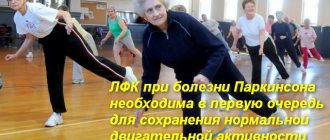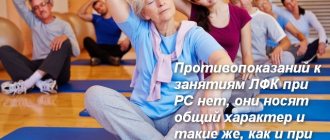Stress accumulated during the working day manifests itself physically in the form of illnesses and ailments. You come home after work and your to-do list never ends. Very little time for self-care. But what if you set aside a little time every day for health and well-being? Sometimes it's important to focus on yourself. This will significantly reduce stress, prevent disease and slow down the aging process.
Try these yoga poses - they are simple, but after regular practice, the results will pleasantly surprise you. Stress levels will decrease, body flexibility will improve, and along with flexibility will come a feeling of well-being and inner peace.
Mountain Pose (Tadasana)
This pose is one of the simplest, but it is not immediately possible to perform it perfectly.
Technique: stand straight, feet firmly on the floor, spread your toes wider.
Legs, feet, ankles are connected. Tighten your buttocks so that your pelvis is over your feet. Tuck your stomach in and roll your shoulders back and down. Hands are lowered down with palms facing out. Close your eyes and stay in the pose for 5 to 10 breaths.
Forward Bend (Uttanasana)
This pose causes a rush of blood to the spine and head.
Technique: From a standing position, fold forward and reach your hands to your feet or ankles, or, if you find it difficult, to your hips or knees.
Relax. Allow your lower back to lengthen and the crown of your head to hang towards the floor. The neck and shoulders are completely relaxed. Breathe deeply, and with each exhalation, pull your stomach towards your knees. Stay in the pose for 5 to 10 deep breaths.
Pigeon Pose (Eka pada rajakapotasana)
The pose is a great stretch for the hip joints, and is perfect for those who spend all day sitting at a desk or driving for several hours. The front of the thigh, back and hip extensors are stretched. If your back is not strong enough to stay in the position for more than a breath or two, don't be discouraged. Practice, and over time it will become easier for you to remain in this position.
Technique: Start sitting with one knee on the mat at a 90-degree angle. The second leg is straight and remains behind. If necessary, use a block under the hips. This will relieve some of the pressure and make balancing easier until flexibility improves. Mentally stretch from your lower back to the ceiling. Hold the pose for 5 to 10 breaths on each side and gradually increase the duration. Repeat on both sides.
Where to start doing yoga
Most techniques allow you to start yoga with any level of physical fitness. But it’s worth getting acquainted with Indian practices by first studying and choosing the appropriate style (direction), which may depend on personal preferences and health status. Each of them has its own specifics and sets certain goals and objectives for practitioners. Therefore, first of all, it is necessary to obtain some theoretical knowledge.
Types and directions of yoga
All modern trends, one way or another, are based on 4 ancient varieties of Indian practices:
- Hatha yoga. The goals of the classes are achieved through special breathing exercises (pranayama) and performing asanas (static poses);
- Raja Yoga (Janyan). The technique focuses on meditation and mental exercises;
- Bhakti yoga. All actions are aimed at achieving enlightenment;
- Karma yoga. Practice involves performing any exercise aimlessly and disinterestedly.
Understanding the essence of these types allows us to consider the modern trends that have developed on their basis:
- Iyengar. The main thing is the detailed adjustment of each pose, during which many auxiliary objects and materials are used. Iyengar classes have several levels of difficulty. At the same time, for absolute “zeros” in yogic culture, preliminary theoretical lessons are required. In addition, there are classes for the elderly and for pregnant women.
- Mysore. The simplest and safest practice. Here you can perform movements at your own pace, take breaks and repeat asanas a convenient number of times.
- Ashtanga. Dynamic and intense practice. The class includes a sequence of several poses that last for 5 breathing cycles.
- Bikram. A set of stretching and muscle strengthening exercises is performed, consisting of 26 asanas. Moreover, each previous pose prepares the body for the next more complex one, and the air in the exercise room is heated to remove toxins from the body (like in a sauna).
- Kundalini. Aimed at supporting and restoring the spine. In addition to asanas, it includes breathing practices and meditation.
- Vinyasa flow. An intensive program without immersion in theory.
- Hatha. There are no breathing techniques or meditations here, only asanas. The goal of practice is maximum physical activity.
- Yin. The duration of stay in one position when performing this complex can reach 10 minutes. The technique develops flexibility, relieves muscle stiffness and increases the elasticity of ligaments. The direction is ideal for a sedentary lifestyle.
This is a small part of the existing styles and types. There are quite a lot of directions. But they all share one principle: they involve improving the body, getting rid of stress and relaxation. Beginners, as a rule, choose Hatha and Ashtanga practices, considering them the simplest. However, experts advise studying all currents in order to decide on the purpose of training.
There is a lot of detailed information on this issue in books and online. For example, you can read treatises such as “The Heart of Yoga” by T.K.V. Desikachar, Yoga Sutras of Patanjali by B.K.S. Iyengar and "Light of Life: Yoga" B. K. S. Iyengar, "Yoga", "Chakras" and "Ashtanga Raja Yoga". You can also read reviews from people practicing certain styles.
But if the choice is made in favor of the La Salute club, then you can always contact a professional trainer for advice. Also, knowing the essence of each type will help distinguish a true master yoga teacher from an amateur or charlatan.
How to prepare and where to practice as a beginner
If, after familiarizing yourself with the theory, the choice is made in favor of home training, then the correct organization will greatly affect the final result. The proposed algorithm of actions will help achieve the effectiveness and benefits of training. What should be done:
- Prepare clothes and accessories. The uniform for classes should be comfortable and preferably made of cotton. For long hair, you need to choose elastic bands (hairpins can get in the way). Ideally, you should purchase a yoga mat. But for the first time, you can lay out a comfortable bedding or blanket. Also for classes you will need a blanket for relaxation in Shavasana, small pillows, a belt and blocks. A smart watch with timers and a heart rate monitor wouldn’t hurt either, but you can purchase this later.
- Decide on a place for practice and arrange the territory. Yoga practice involves peace and harmony. Therefore, it is important to find a quiet place with good lighting, where there are no distractions (street, household, neighbors) and no irritation. It is important that there is no furniture nearby that can be touched and injured. The space can be decorated with motivating photos and pleasant things that create the right mood.
- Make a lesson schedule. Despite the fact that the morning hours for yoga are a priority, you can choose any convenient time for training. But practices should not cause stress in the body. In addition, you need to take into account the hours of eating and sleeping time.
- Choose suitable music. Silence is not the best ally for proper concentration in practice and relaxation. Calm melodies will help you focus on the rhythm and achieve peace of mind.
- Decide on a set of exercises. Choosing the style and direction of yoga does not solve the problem of training. Any of them includes dozens of asanas, differing in purpose and complexity of execution. That’s why it’s so important to build a program that’s comfortable for yourself at the first stage.
The main thing when compiling a personal complex is balance. That is, all types of exercises must be present in the lesson: standing, lying down, sitting, twisting, etc. But the sequence of poses does not matter and depends only on individual preferences.
However, it is better for beginners to start training under the guidance of an experienced trainer. The instructor will select a set of exercises and monitor the progress of their implementation. This will make it possible to learn the correct positions of body parts in asanas, which will increase efficiency and make training safe.
If the classes are not individual, but you have to work in a group, then this will add motivation and organization. In addition, additional communication often improves mood. In any case, qualified instructors of the La Salute fitness club will help everyone achieve high-quality results in mastering the practices.
Reclining Pigeon Pose (Eka Pada Rajakapotasana)
Deeply bending pigeon pose requires less effort and is more relaxing. Stay in it longer and breathe. The asana releases stress and tension in the hips and increases flexibility.
Technique: Start in the same position as pigeon pose and slowly lower yourself onto your palms or forearms onto the floor. If it becomes easy, fold your hands on top of each other and rest your forehead on your hands. Stay in this position for 5 to 10 breaths. Repeat on both sides.
Stress: causes and consequences
How do you know if you are stressed? Pay attention to these symptoms:
- headache,
- frequent colds,
- panic attacks,
- chronic fatigue,
- insomnia,
- increased blood sugar,
- increased blood pressure,
- problems with the reproductive and cardiovascular systems,
- muscle cramps.
Appearance also suffers: early gray hair, hair loss, acne, wrinkles. Modern man suffers serious losses from stress!
Doctors and psychologists are trying to take control of the situation and are developing various stress management strategies. But, as practice shows, they do not solve problems. On the contrary, global statistics show an increase in the number of people living in constant stress and depression. Against the backdrop of a sad picture, there is a way out - yoga for stress.
Moreover, many people have already felt the positive influence of yoga. But to overcome stress, you don’t need occasional exercises, but regular and varied practice that will literally be woven into your everyday life.
Cobra pose (bhunjangasana)
This pose strengthens the back, opens the shoulders, chest, and strengthens the muscles along the spine.
Technique: from a prone position on your stomach, both palms under your shoulders, fingers spread wide, pelvis pressed against the mat, push off the floor with your hands and lift your chest up. Pull your shoulders away from your ears, lengthening your neck. Look up a little. Take a few breaths and slowly lower yourself to the starting position.
Sahaja Pranayama
Yoga breathing exercises improve the functioning of the nervous system, eliminate tightness in the body and help get rid of concentration on your problems. Sahaji pranayama is designed to cope with many nervous diseases, but to obtain the desired result it is important to do it every day. Among other things, this exercise improves lung function and cleanses the oral cavity.
Performance
Sit in a comfortable position, take a full breath and purse your lips into a tube, leaving only a small gap. Exhale in short, strong bursts, trying to push all the air out of your lungs. The peculiarity of this yoga exercise is the need to contract all respiratory muscles. To completely calm the nervous system, you need to repeat pranayama 10 times. Please note that after each exhalation it is important to stop breathing a little.
Cow Head Pose (Gomukhasana)
Crossing your hips is not as easy as it seems. For those who find this pose difficult, use a pillow or rolled up blanket and place it under your hips.
Technique: Place your left leg on top of your right, cross your knees, and sit between your legs. You need to sit with your back straight. Place your right hand back, behind your head, and your left hand back, below, and clasp your hands together. Hold the pose for up to 10 exhalations on each side.
Wide Leg Forward Bend (Prasarita Padottanasana)
Sometimes simply bending forward can be challenging for those with tight hips and hamstrings.
Technique: Spread your legs as wide as you can.
Place your palms between your legs and slowly step them forward until your elbows touch the floor. Breathe deeply, consciously relaxing tense areas. Hold the pose for 5 to 10 breaths and gradually increase the time you stay in the pose. The more you hold this pose, the faster you will see progress.
Rules for practicing yoga for beginners
A yoga complex is the sequential performance of different poses (asanas) and staying in each of them for 2-3 minutes. Begin the session with meditation. Afterwards they move on to a warm-up, the exercises of which warm up the muscles, prepare them for stress, and then calm and relax them. Therefore, the first part is more reminiscent of regular exercises, but towards the end the movements become calmer and smoother.
At this stage of performing basic asanas, it is important not to just sit, lie, stand and twist, but to concentrate your thoughts on the training and monitor the sensations in the body. In addition, it is necessary to manage the tension, keeping it only in the “working” areas and removing it from other places. In the future, this will help free the body from clamps, which will improve the state of the psyche.
If someone gets injured while performing yoga exercises, it is only due to their own oversight or inattention. You cannot allow your mind to “wander” while working on asanas. You need to concentrate as much as possible on each moment and focus on the sensations in your body.
All movements of the complex should be slow and smooth. You need to enter and exit the asana calmly and slowly, and when you are directly in the pose, you need to be able to gently balance. It is also necessary to relax contracted muscles between exercises. Just a half-minute rest is enough for this.
During the performance of asanas, one must observe safety and moderation. The complex for inexperienced yogis should contain only simple exercises, and complex options should be started after mastering the basics. In addition, any unpleasant or painful sensations are abnormal. At the initial stage, you should not stretch or bend over too much if this causes discomfort.
It is also important to know that the basis of any practice is always correct breathing. If you perform the exercises without proper attention to the process, then the expected effect from yoga will not be achieved. Inhalations and exhalations should be calm, measured, deep and cyclical. During your first lessons, you may need to use a metronome to set the right tempo. But gradually the correct rhythm will become a habit.
The first workouts should not exceed 20 minutes. After all, the body and organism have not yet adapted to the stress. But the usual duration can reach up to 2 hours. Each lesson always ends with Shavasana, when you need to lie motionless for 10-15 minutes (in the beginning 5-7 are possible). In this asana, the body and mind relax, rest and “overload”, which contributes to a surge of strength after exercise.
There are also a number of general recommendations that you need to familiarize yourself with before starting yoga, so as not to harm your health and properly develop your body and thoughts. They sound like this:
- It is advisable to practice yoga in the morning. Ideally - at 5-6 hours. This is more correct from an energetic point of view, and allows you to get a boost of energy until the evening.
- Immediately before class, you should not take a hot or contrast shower (bath). Only warm. The same applies to the period immediately after training.
- Before class, you should ventilate the room. The air in the room should be fresh.
- You need to ensure a calm environment during practice: turn off the volume on your phone and turn off the TV.
- You can drink water before and after completing the program, but not during it.
- You should start classes in a good mood and really want to immerse yourself in practice. The attitude is important.
- You cannot study and improve yoga after drinking alcohol. At least 36 hours must pass.
- You should not start training if you feel unwell or have a high body temperature.
As for nutrition, here, as in the case of aerobic exercise, it is necessary to exercise strictly on an empty stomach. Not only well-being and the effectiveness of the practice depend on this, but also clarity of perception and purity of thoughts. After eating, at least 2 hours should pass, but it is better if it is 3-4. Before your morning workout, you can eat a piece of fruit or drink a glass of water.
Yogic traditions suggest vegetarianism, considering animal food as a source of negative energy. But you don't have to follow this. It is enough that the diet is balanced, meets the criteria for a healthy diet and contains all the necessary nutrients. The products on the menu should ensure restoration of strength after exercise and prevent wear and tear on joints during exercise.
Interesting! People who prefer plant-based foods have more mobile and flexible joints, which is very helpful in yoga.
King of the Fishes Pose (Ardha Matsyendrasana)
To completely relax and relieve stress before completing your session, include a seated twist in your practice. It stretches the muscles of the lower back, hips, buttocks and spine.
Technique: sit on the floor, place both legs in front of you, bend your left leg at the knee and cross it over your right, so that your foot is on the floor near your right thigh.
Then turn your body to the left. Inhale and join your palms in namaste. Hold the pose for three to five breaths. Repeat on the other side.
Contented Child's Pose (Ananda Balasana)
This pose completely relaxes the back and pelvis.
Technique: lie on your back, pull your knees to your chest, grab yourself by your big toes, while keeping your pelvis on the mat. Try to pull your knees towards your armpits. Feel the stretch in your groin area. This pose perfectly relaxes, relieves stress and tension. Hold for 5 to 10 breaths.
Lying Twist Pose (Supta Matsyendrasana)
The purpose of this pose is to release tension in the spine.
Technique: lying on your back, with a deep breath, lift your knee to your chest and move it in the opposite direction. (if left, then to the right, if right, then to the left). Do not lift your shoulders off the floor, keep your hands free. Release any tension, feel your body open and free. Repeat on the other side.
Knee press
The pose stretches the back and relieves tension.
Technique: Lie on your back with your arms and legs extended. As you inhale, pull your knees to your chest and hug them with your arms. Keep your back straight and rock gently from side to side and back and forth. The chin is pressed towards the chest to align the neck. Exhale and gently lower your feet to the floor.
Benefits of yoga before bed
Yoga, unlike other techniques known to mankind, has the most important feature - it not only relaxes the body, but also makes our mind calmer, due to this our body can restore strength and fully relax.
In cases where a person has problems sleeping, he resorts to the help of medications that have side effects. Yoga at night
- a much more effective and safe way to normalize night rest.
In order for our day to start easily and cheerfully, we need proper rest. Not only our mood, but also our appearance, as well as our performance throughout the day will depend on the quality of our rest.
In addition to the evening yoga classes
safe for our body, several factors can be identified that confirm the benefits of evening practice:
- slowing down thought processes, freeing the mind from unnecessary thoughts,
- during evening practice our body is saturated with oxygen,
- correctly selected asanas for sleep relieve tension and fatigue,
- Evening practices eliminate emotional imbalance.
If you make yoga practice before bed a regular ritual, you can cope with any sleep disorders, including insomnia. By practicing regularly, you will learn to relax your body, preparing it for a night's rest.
Lying Butterfly Pose
The asana stretches the inner thighs and groin. Increases blood flow into the pelvis.
Technique: Lie on your back with your legs and arms straight.
Bend your knees and spread them apart. Feet together. Place your hands on your knees, palms up. Adjust your spine by lengthening it while maintaining the natural curve of your lower back. Close your eyes. Breathe naturally. Stay in the pose for 5 to 10 minutes. To exit the pose, bring your knees together and place your feet on the floor.
Content:
- 1 How does yoga affect your mental state?
- 2 Scientific evidence
- 3 Side effect of practice
- 4 A set of exercises to relieve stress 4.1 Elements of asana
There are quite a few methods of treatment, one of them is yoga. It is believed that by performing exercises accompanied by certain mantras, a person is able to relax.
Legs up against the wall (Viparita Karani)
The pose stretches the back of the legs and calms the mind. Like all inverted poses, this asana has a rejuvenating effect. It also reduces anxiety, headaches, insomnia and depression.
Technique: Place a cushion or pillow against the wall. Then carefully lift your legs up onto the wall. Shoulders and head on the floor. Hold the pose for 5 to 10 minutes.
Top 10 asanas for stress relief for advanced
Experienced practitioners with regular yoga classes are more flexible and can easily perform complex balance poses, which is why advanced asanas are offered to relieve stress in more complex ways. Thanks to regular yoga classes, stress goes away, tension is relieved from the muscles and brain, and the body heals.
Warrior Pose III
Why: Restoring correct posture, improving balance, balance, concentration, strengthening muscle groups of the legs. The stance returns the torso to a stable, natural alignment.
How to do it: Get into Warrior I pose (lunge pose from the beginning of the article). Then shift your body weight to your front leg and lift your back leg up. Tilt your body, stretch your arms forward. The body, outstretched arms and raised leg form one line. Stretch your neck, straighten your shoulders, squeeze your shoulder blades, pull in your stomach and tighten your buttocks. Try to keep your body and raised leg parallel to the floor.
Cow Head Pose
Why : Relieve tension from the shoulders, develop elasticity in the chest area, open the hips and relieve cramps in the legs. This yoga pose leads to relaxation, cleansing of the body, and improvement of organ function.
How to do it: Take a standard sitting position, stretch your legs forward, and place your palms on the floor. Raise your buttocks, bend your left leg, sit with your pelvis lowered on your left foot. Throw your right leg over top, move your shin back, place your knee on your knee. Ankles on the floor, heels at hips, toes out to the sides. Make a lock with your hands behind your back, keep your head straight. If the lock doesn't work, you can simply connect the fingers of both hands.
Headstand
Why : Improving memory, thinking, attention, normalizing hormones and energy changes. Hemoglobin levels increase. The asana relieves anxiety, irritation, insomnia, and fatigue.
How to do it: Get on your knees, place your hands on your elbows in front of you so that a distance is shoulder-width apart. Clasp your palms, then between them place your head on the back of your head with the crown. Gradually lift your pelvis and move your legs toward your elbows. Push off slightly and straighten your knees upward, first one and then the other leg. At first, you can perform this asana against a wall, with the support of a partner, or with your legs bent.
Half Triangle Pose
Why : Stretches the hamstrings, hamstrings, calves, and strengthens the back. This yoga exercise eliminates stress, fatigue, and sudden mood swings. This is also an indispensable exercise for training longitudinal splits.
How to do it: Kneel down and form a 90-degree angle between your thigh and shin. Place one leg forward on your heel, toes towards you, but do not bend your knee. Bend over, touch your stomach and chest to your thigh. Place your hands on your palms on either side of your exposed leg. Keep your head and neck straight, stretch forward, stretching your spine. If flexibility allows, you can place your forearms rather than your palms on the mat.
Plow pose
Why : Strengthening the circulation of oxygen-rich blood to the brain, restoring the functions of hormonal processes and digestion, stretching the cervical and thoracic spine. This yoga asana leads to relaxation, tone, and freshness.
How to do it: Lie on your back, pressing your body firmly against the surface. Do a half-somersault back - place your straight legs behind your head, place them on your toes a little further away. Straighten your arms, place them on the floor, palms down. Point your pelvis upward, do not lift your shoulders and head, and pull your chest towards your chin. Do not bend your knees, keep your spine in a slight semicircle. At first, you can perform this asana with your feet resting on the wall.
Bow pose
Why : Development of balance and balance, working out the muscles of the back, legs and core, including the abdominals. One of the best asanas for improving flexibility and mobility of the spine. Asana against stress calms the nerves and strengthens the muscles.
How to do it: Lie on your stomach, put your arms back, bend your knees. Lifting your chest and hips off the floor, grab your feet with your hands. Deepen the arch in your spine and pull your legs closer to the back of your head. Don't throw your head back, keep your chin raised. Bring your shoulder blades together, open your chest and shoulders. Relax your neck.
Bent Candle Pose
Why : Calming the mind, teaching mindful relaxation and increasing blood flow from the legs to the head. Yoga not only relieves stress, but also relieves tension and makes your legs feel lighter. Balance develops.
How to do it: Lie on your back, then assume a plow pose. Place your hands on the edges of the body on your elbows, and clasp your lower back with your palms. Turn your fingers, except the thumb, back and to the sides - you will get a bowl. Lower your pelvis there with your body weight. Keep your legs straight straight up, pull your sternum and lumbar area in the same direction. Keep your head and shoulders intact.
Intense Stretch Pose
Why : Restoration, calming the nervous complex, combating poor and weak sleep, depression, irritability. This yoga asana relaxes muscles, stretches the spine, and improves blood flow.
How to do it: Sit on the mat, put your feet forward, connect them together, press them firmly to the floor. Begin to gradually bend forward until your torso touches your thighs. Place your head between your shins and grab your feet with your palms. Ideally, do not bend your knee joints. Beginners may want to soften their knees a little or reduce the angle to their feet.
Seated Angle Pose
Why : Stretching the leg muscles, especially the inner thigh, giving elasticity to the popliteal ligaments. Exercise helps relieve back pain, stimulates blood flow in the pelvic area, and calms the brain.
How to do it: Sit in a half-split position - spread your legs wider and point your toes straight up. Bend over and place your body, from your stomach to your chest, on the floor in front of you. Do not bend your knees, but press your legs tightly. Wrap your hands around your feet. Stretch your spine well. Beginners can assume a half-split position with their legs spread out, but do not lean their body forward.
Yoga sleep pose
Why : Spinal column traction, back flexor muscle tone and rejuvenation. The asana eliminates anxiety and insomnia. Massage of internal organs (spleen, intestines, kidneys) is also carried out.
How to do it: Lie on your back, throw both legs, bent at the knees, behind your head. Help with your hands to move one ankle, and then the other, behind the neck until the ankles cross. Clasp your hands tightly in the lumbar region, and stick your head between your shins. Look straight ahead, breathe measuredly, evenly and slowly. Gently unravel back.
Yoga is practiced to support physical and mental health. With the mastery of asanas, it becomes increasingly easier to connect consciousness, body and breath at a single point. Asanas for stress are recommended for excessive stress during the day, the development of fatigue and fatigue, heavy mental work, nervous disorders, and worries. Yoga relieves stress, tension, and muscle tension.
5 reasons why yoga is ideal for stress:
- Replenishing energy, establishing harmony between body and spirit.
- Working with the inner world, searching for oneself, goals, purpose in the world.
- The right direction of thoughts, learning to accept mistakes and failures.
- Improving blood and lymph circulation, the functioning of internal organs.
- Peace of mind, working through fears, distraction from the outside world.
If you practice yoga regularly, then external and internal manifestations of stress will gradually disappear from your life. Your well-being and health will improve, joint flexibility and muscle elasticity will increase. Relaxation from yoga will teach you to adequately look at what is happening around you, get rid of emotional swings and remain balanced and humble in stressful situations.
Features of yoga practices for stress relief:
- A relaxed body and a concentrated, collected mind.
- Detachment from the outside world while taking an asana.
- Deep, measured and even breathing movements.
- Refusal to exercise when irritated or excited.
- Regularity – at least 3 times a week, preferably every day.
- Quiet, comfortable environment conducive to tranquility.
When entering each pose, you must follow safety rules - do not overdo it, do not immediately exceed the limits of what is possible and strictly follow the instructions. If asanas cause anxiety, pain, discomfort in joints and muscles, then there are errors in execution. After class there should be an influx of energy, not fatigue, exhaustion, or weakness.
See also our other selections:
- Therapeutic exercises for scoliosis and kyphosis: 10 exercises
- Top 10 Butt Stretch Exercises for Beginners
- Top 25 Relaxing Yin Yoga Asanas: Improve Your Flexibility
- Top 20 power yoga asanas for weight loss: beginners and advanced











